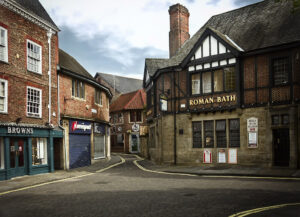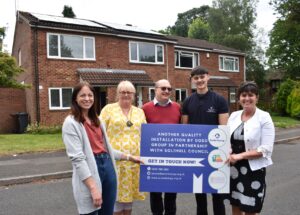Slough to look at Clean Air Zone options
Slough borough council will become the latest local authority to consider proposals for the establishment of a Clean Air Zone (CAZ) to tackle air pollution.
The measure is one of a number of proposals to be taken forward as part of a Low Emission Strategy, which was approved at a meeting of the council’s cabinet on Monday (September 17).
Slough has designated five Air Quality Management Areas (AQMAs) due to elevated levels of nitrogen dioxide (NO2) breach the national annual mean NO2 objective and where there is exposure to residents.

Slough council has approved a Low Emission Strategy
The Strategy forms a part of Slough’s Air Quality Action Plan, and will lay out an “integrated, year on year plan to improve air quality over the period until 2025” with policies aimed at reducing vehicle emissions and accelerating uptake of cleaner fuels, the council says.
Within the strategy, the council has included a CAZ Framework, in which it commits to examining the potential for a Clean Air Zone, ‘with view to setting emission standards for buses, taxis and freight vehicles’.
This would come alongside work with bus operators to reducing vehicle emissions and ‘considering alternatives to diesel technology’ as well as similar work with freight operators.
Planning
The CAZ Framework sits alongside other policies which include the adoption of new Air Quality Planning Guidance, which the council says will ‘provide clarity to developers through the planning system’, of their requirements to reduce air pollution.
Slough will also require minimum vehicle emission standards in procurement processes for new fleet vehicles, including insuring that light commercial and community service vehicles meet the Euro 6/VI standard.
All contractors using commercial goods vehicles in the delivery of council contracts will ensure that diesel vehicle emissions comply with European Emission Standard VI standard, the council adds, as well as pledging that all vans under 3.5 tonnes will be zero-emission capable by 2028.
Other policies include the implementation of a Travel Hierarchy aimed at supporting and encouraging sustainable travel options such as walking and cycling.
Standards
The council may also look to set minimum emission standards for both Hackney Carriages and private hire vehicles (PHV) that ‘comply with national Clean Air requirements’ and promote the use of ultra-low emission vehicles (ULEV). To support this the council will look to install a network of dedicated, rapid charging units.
Commenting on the strategy, Councillor Rob Anderson, the council’s cabinet member for environment and leisure, said: “The council has developed a low emission strategy which supports our transport strategy in targeting reductions in vehicle emissions across the borough.
“The health and wellbeing of our residents and the people who visit and work in Slough is paramount and we can make great improvements to our local air quality if we work together towards a shared vision.
“We are committed to making immediate and long lasting improvements to our environment and we’d like residents and businesses to help us deliver our plans to create a low emission future for Slough.”
The development of Slough’s LES was part-funded through Defra’s Air Quality Grant Programme and was produced with technical support from Low Emission Strategies Ltd.
Related Links
Slough borough council – Low Emission Strategy
















